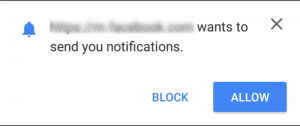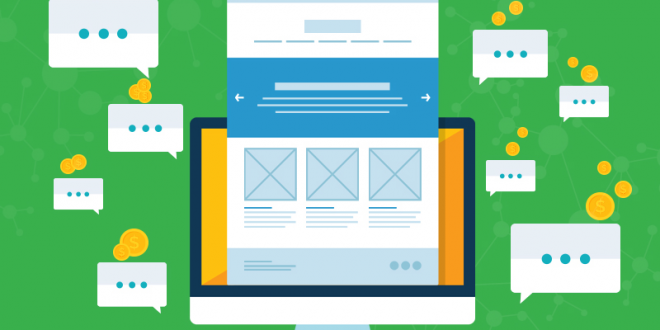Web push notifications opens up a whole new and modern way to earn income through your website. In this two-part article, you will learn on how monetize and earn more with your website regardless of whether it’s an affiliate site, blog of any kind or even an ecommerce website.
These two articles are very important given the very recent advent of web push notification as a way to earn revenue and it is therefore brimming with potential.
We will take a close and detailed look at what the most crucial elements for monetizing web push notifications are. You will also find out and get an understanding tips, best practices and processes for making your web push notifications integration a successful one.
What Changes, Why Are Web Push Notifications a Thing?![]()
Even though we have mentioned how web push notifications are a very recent development and are just now starting to get the recognition that they deserve, business owners as well as savvy marketers have found them to be extremely promising and quite lucrative.
If you want to get the Cliff’s Notes on why web push notifications are so fantastic, here are three reasons just to get your appetite wet:
- Reliable delivery to a large number of people, no matter if you have 100 subscribers or 100,000 subscribers.
- Web push notifications have a visibility rate that is pretty much off the charts and it nears 100% in some cases.
- Web push notifications contain calls-to-action that are quick and effective.
Show Me the Money!
 Let’s be real, if you have a website that caters to a specific segment of the general audience, what’s commonly known as “niche” sites, the income that you get from that website will largely have to do with traditional advertising methods such as Google Adsense and the like. If you are deep into the game, you might also have a few affiliate links thrown into your content for good measure. This is where web push notifications come into play…
Let’s be real, if you have a website that caters to a specific segment of the general audience, what’s commonly known as “niche” sites, the income that you get from that website will largely have to do with traditional advertising methods such as Google Adsense and the like. If you are deep into the game, you might also have a few affiliate links thrown into your content for good measure. This is where web push notifications come into play…
Web push notifications give the owners of these websites a whole new playground and the ability to monetize their users, even when they are not on their website. Yes, you read that right.
How Do Web Push Notifications Fare Against What’s Already Working?
On paper, web push notifications might seem akin to what publishers get with traditional email marketing. But there are quite a number of differences between the two and we will be exploring those in just a moment.
We have seen plenty of website owners who believe that web push notifications will simply overtake email in due time and that traditional email marketing will be a thing of the past. That is surprisingly not true and let us tell you why.
Once you see the benefits of web push notifications as far as your stream of income is concerned, you might be tempted to just ditch email entirely. Well, the fact of the matter is that email marketing and web push notifications work much better as compliments to each other, not as rivals.
Since web push notifications offer so many advantages that website owners might not be accustomed to, a few of which we have just talked about, they might believe that they can rely on them entirely to monetize their website. To be honest, that is a good strategy, because of the reasons we have outlined above, but again, if we use them alongside the traditional email marketing that you and I know, the results will be much better.
Web push notifications easily overcome a few of the hurdles that traditional email just cannot shake off such as time of delivery, rate of visibility, time sensitivity and reliability.
It is because of those reasons that web push notifications can serve as a great way to gain more subscribers for your website, get more eyeballs on your content and cash in on that attention. Plus, it has the added advantage of ease of use both for the website owner and the website visitor.
The Recipe to Monetize Web Push Notifications Successfully:
 Like with anything else in life, there are a few factors involved in any successful monetization of web push notifications. The first key is to understand your audience. You might think that you currently understand them and you might be right up to a point, but one of the other great things about web push notifications is that they allow publishers and website owners to get a deeper understanding of their audience.
Like with anything else in life, there are a few factors involved in any successful monetization of web push notifications. The first key is to understand your audience. You might think that you currently understand them and you might be right up to a point, but one of the other great things about web push notifications is that they allow publishers and website owners to get a deeper understanding of their audience.
As best we can tell, there are a few key factors involved in any successful web push notifications strategy. They are 4 and they are as follows:
- An excellent opt-in placement.
- Successful understanding of your audience through data analysis and metrics.
- Knowing how to cater to your subscribers.
- Personalization of the notifications sent.
Each one of these has its own characteristics, so let’s get into detail about each one of them.
An Excellent Opt-In Placement
This is the first key factor and it is certainly the most important. If you think we are only talking about where you put the opt-in for the user, you would be incorrect. Converting users to subscribers all starts here and if you don’t have your placement right, it doesn’t matter if you do everything else right.
As far as reliability, the most popular browsers all have pretty much the same rules as far as getting, displaying and handling web push notification requests.
This, however, is also the same pitfall that most would-be web push notification rockstars fall into. They think that just going with the flow is okay and that is unfortunately not the case at all.
Placement is also about timing. If you do the common mistake of asking your visitors to become subscribers right away, unless they are already familiarized with your website, they will be tempted to click on “Deny” and if they do, you are, unfortunately, SOL.
But hey, we know you’re not everyone else and that’s why we have a solution for this problem.
Introducing the Pre-Permission Screen:
 It might sound weird at first, but if you truly want to stand out from the crowd and be considerate with your users, using a pre-permission screen for your opt-ins, which is exactly what it sounds like, will be a great idea.
It might sound weird at first, but if you truly want to stand out from the crowd and be considerate with your users, using a pre-permission screen for your opt-ins, which is exactly what it sounds like, will be a great idea.
The benefits of the pre-permission screen are manifold, but here are just a few of them that you will immediately recognize and be able to take advantage of.
First of all, you are creating context for the request. If you ask your visitors to subscribe right away, they will be tempted to just click on “Deny” since they might not know what they are getting into. If you structure it properly, it will not only be recognized as a sign of respect by the user, but it might also convince them to click on “Allow” all by themselves.
The second benefit is additional information. Remember how we talked about web push notifications being brief? Well, this also circumvents that problem. If you give the user anything else in addition to the default and boring opt-in screen, they will take notice and influence their decision.
A third benefit that you should consider is the fact that pre-emptive permission screens will allow you to “pre-screen” users. If they were not ready to subscribe despite of all the information that you give the, they were not going to subscribe anyway and that’s okay, so if you give them the option to not subscribe at that moment, you are also giving them the option to reconsider in the future instead of just clicking “Deny” and being done with the whole thing at that moment.
Let’s take a look at one of these pre-permission screens looks like:

As you can tell, this pre-permission screen looks a lot like the actual notification screen for Chrome on Android, which is great because the user will not waste the one chance they get to subscribe to you easily.
Now, if the user does accept to get more information, they might then be prompted to become a push notification subscriber.
And if they decide that they are not ready yet for such information, it would then be a good idea to just leave it at that. But notice how you are not burning your one chance to let them become a subscriber, therefore, if they change their minds later on.
You also have the added benefit of letting them know that they can change their minds later on if they don’t like the web push notifications that they get, therefore making it all more streamlined and user friendly.
If You Don’t Use Pre-Permissions, You’re Doing It Wrong
Just because web push notifications are small, it doesn’t mean that the way that you convince your users to become a subscriber have to be that way too.
If you compare the way that most websites employ requests to what a pre-permission screen brings to the table, there really is not a fair comparison.
You are giving people all the information that they need at just the time they need it. Are they ready to come on board? Great! Let them join right in. Not ready yet? Perfect, let’s save that request for when it matters.
Too Long; Didn’t Read:
- Not all web push notifications have the same results and if you want to have the best results, you’ll have to stand out.
- The best way to do that is by using a pre-permission screen which lets your users get more info about what they are actually subscribing to.
- Pre-permission screens also prevent users from clicking on “Deny” which burns out your only chance at making them a subscriber.
- Web push notifications are great by themselves and excellent when used in conjunction with other technologies such as traditional email and the like.
In Part 2 we will take a closer look at how you can use the rest of the key factors to your advantage in order to create a successful
 Push Monetization Blog
Push Monetization Blog

